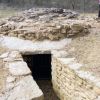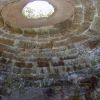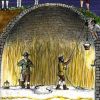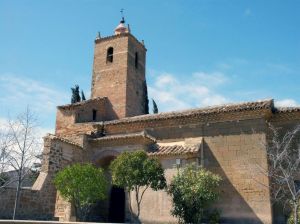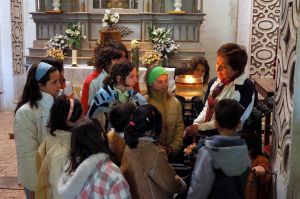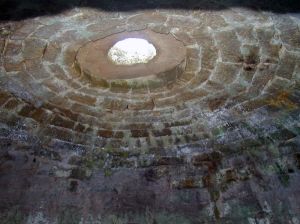The ice houses of Somontano represent the most important nucleus in the province of Huesca and reflect the importance of commercial activity related to the collection of snow and ice between the 16th and 18th centuries. There was a large network of these constructions tracing a path from Otín in Guara to the city of Barbastro and down to the Monegros region to the south. In the Sierra de Guara to the north there were production houses where the snow was collected and stored. Further south were the ice houses that received, stored and distributed the snow as well as making ice.
The remains of eight ice houses still stand, all made from impressive ashlars or masonry. In the mountains of Guara and Sevil, they can be seen in Otín, Campoluengo and Dineretes with others in Bierge, Alquézar and Adahuesca.
The Buera ice house is located on the footpath that leads from the village to the Dulcis chapel. It is known as d’Os Moros, or “of the Moors” as all constructions in the region whose origins have been lost to memory are attributed to “the times of the Moors” as it represents an image of an ancient past.
The large floor area is circular in design, covered with a beautiful stone dome and semi-buried beneath floor level.
It was used to store and conserve the snow that had been collected in the nearby mountains. As well as being used for the conservation of food it was also important to aid therapeutic measures; to treat fever; to reduce swelling around broken bones, to stop bleeding and, when melted and mixed with oil, to treat burns. The use of snow, and consequently the thriving trade that went with it, was popular from halfway through the 16th century until the arrival of the modern day freezer.



